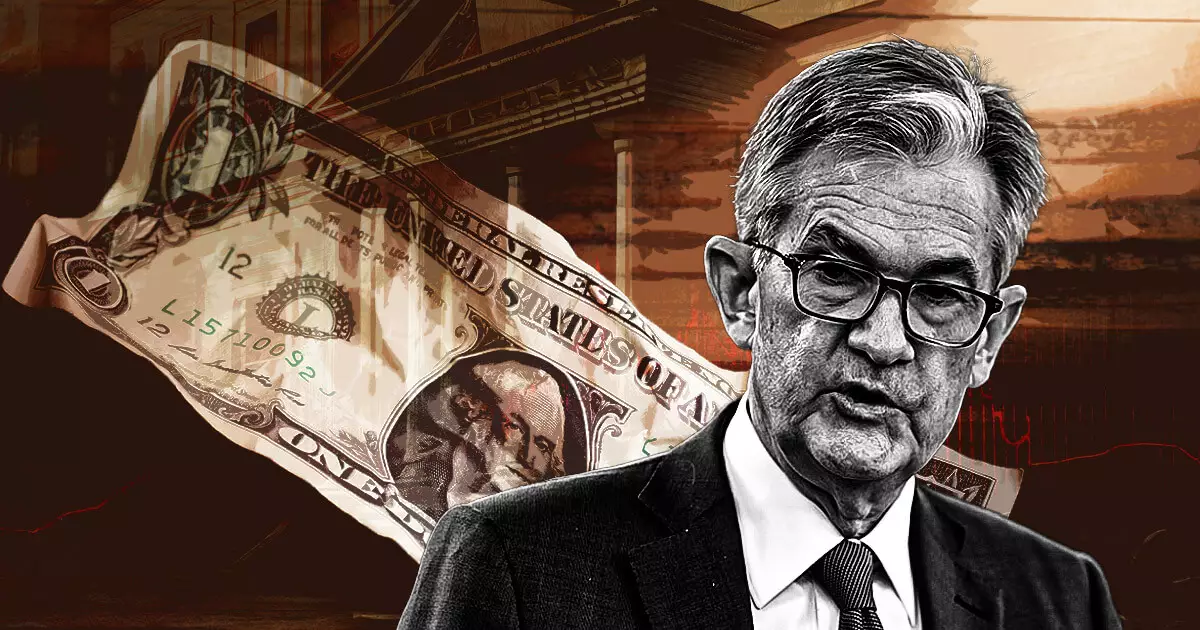In an era where digital currencies are no longer a mere novelty but a significant financial instrument, Federal Reserve Chair Jerome Powell’s latest comments have reignited a crucial conversation around stablecoins and their regulation. While Powell has acknowledged the Federal Reserve’s cautious approach, his assertion that a regulatory framework for stablecoins is necessary represents not just a shift in tone, but a vital recognition of the changing landscape. It’s an optimistic signal, but it must be reinforced by action, especially as digital currencies are cementing their roles in everyday transactions.
The growth of stablecoins can hardly be overstated; with a staggering $14 trillion in transfer volume last year, their usage has outpaced even traditional banking giants like Visa. This shift isn’t merely a blip in the financial matrix; it reflects a tectonic change in how consumers and businesses engage with money. The Fed’s hesitance to craft comprehensive legislation previously seemed prudent, but as Powell observed, “the climate is changing.” Lawmakers are beginning to recognize the opportunity stablecoins present. The time for half-measures is over; we need robust legislation that can harness potential while ensuring safeguards.
Consumer Protection at the Core
Stablecoins, while innovative, are not immune to risks—both for consumers and the broader financial system. The absence of regulation invites potential pitfalls, from fraudulent activities to significant volatility, undermining the very trust that financial systems rely upon. Powell’s insistence on including consumer protections in any proposed framework shouldn’t be merely an afterthought; it must be foundational.
Imagine a world where users of digital currencies feel secure in their transactions, confident that their investments are safe from manipulation or deceit. As the Fed explores how to regulate stablecoins, it should prioritize transparency. Consumers deserve clear information about potential risks and reward structures within these ecosystems, fostering an environment of informed participation. It’s not just about preventing losses; it’s about cultivating a marketplace where innovation can flourish.
Bridging Traditional Finance and Digital Innovation
The relationship between banking institutions and the crypto industry need not be adversarial. It can serve as a powerful alliance, bridging traditional finance with the potential of digital innovation. Powell’s remarks hint at a potential thawing of the chilly reception banks have offered to crypto enterprises. By evolving its guidance on how banks manage exposure to digital assets, the Fed can encourage a responsible yet innovative banking environment.
For too long, regulatory frameworks have been draped in caution, inadvertently stifling growth in a sector that holds the promise to redefine financial transactions. The Fed’s ability to guide banks in a way that prioritizes “safety and soundness” shows a commitment to harnessing the benefits of innovation without compromising on financial stability. The path forward includes a commitment to open discussions about what responsible integration looks like—a dialogue that must involve regulators, banks, and the burgeoning crypto industry itself.
Legislative Landscape and Policymaking Challenges
Despite the burgeoning interest in regulating stablecoins, the legislative landscape remains murky. Current proposals, including the GENIUS Act and the STABLE Act, indicate a growing urgency among lawmakers. Yet, the question remains: can an effective framework be designed swiftly enough to capture the dynamics of this rapidly evolving space?
A missed opportunity could lead to stagnation, allowing other countries to take the lead in digital asset regulation, potentially rendering the US a follower rather than a leader. Investors and tech innovators need clarity. Without effective governance, tomorrow’s leading companies may sprout in jurisdictions with more favorable regulations, leaving the US financial system at a disadvantage.
Policymakers must challenge themselves to think creatively and expediently, recognizing that a proactive stance on stablecoins isn’t just about regulation; it’s about positioning the U.S. as a global leader in financial innovation.
With Powell’s perspective as a guide, regulatory bodies need to cultivate a legislative environment that champions innovation while safeguarding consumers. The challenge ahead is significant, but the stakes have never been higher—both for traditional financial institutions and for the future of digital assets. The Federal Reserve’s next steps could truly define the landscape of finance for generations to come.















